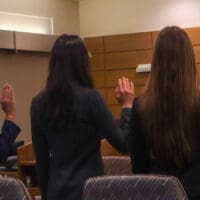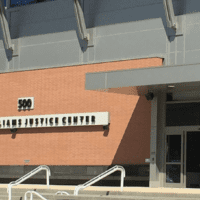

Padua freshmen and sophomores create toys that are then presented to judges and industry experts, including Melissa & Doug reps.
The engineering students of Padua Academy are making their ideas come to life through the engineering facilities and a 3D design lab at the University of Delaware.
Two years ago, the all-girls school in Wilmington partnered with Chemours Discovery Hub at the University of Delaware STAR Campus in an effort to connect Padua’s students with industry experts.
The young women are part of a Padua class called Discover Engineering.
It was created by Cheryl Szurkowski and Dr. Jenny Buckley, a UD associate professor in mechanical engineering, in 2020 to give the Padua students a better understanding of what engineering processes entail by providing real-life construction of products.
Chemours is a chemistry company based in Wilmington that spun off from the Dupont Co. It has said it plans to invest $50 million in STEM education and to fill 50% of all its STEM positions globally with women.
The company’s 312,000-square-foot hub on the Star Campus features more than 130 labs specializing in titanium technologies, thermal & specialized solutions, advanced performance materials, and chemical solutions. The facility is home to about 300 of the company’s researchers and scientists, consolidating most of the company’s U.S. innovation efforts.
Through Discover Engineering, freshmen and sophomores at Padua are assigned to create toy prototypes, which junior and seniors are assigned a task.
The toys include simple machines. The students design and build them and then are asked to present their results to industry representatives, professors, judges and alumni. Presentations are given in December, with reps from the toy company Melissa & Doug in attendance.
“The students get really excited about the class, especially on the build days,” Szurkowski said. “There’s so many advanced tools in UD’s labs, and they’re like kids in a candy store.”
Maggie Morris, a student in the class, said that working at a college lab helps students who want real-world engineering experience.
“My favorite part of the class is the build day at UD,” she said, “We were able to use tools that we do not have in the classroom and receive help from professional engineers.”
Szurkowski had been teaching a similar year-long engineering class using a Boston Museum of Science curriculum. What she really wanted, though, was a semester-long class so more students could participate.
With the help of Buckely, the Discover Engineering class was created.
Since then, Szurkowski said enrollment in engineering classes has gone up and after taking the hands-on class, many of her students register for additional classes in the field.
The Chemours hub houses a traditional low-precision manufacturing space where prototypes are made in wood and plastic, as well as a high-precision area that utilizes metalworking operations and a digital fabrication area for laser cutting and 3D printing.
The senior project in Discover Engineering starts with a question the students must work to answer.
This past fall, they were asked “What do you think would make science classes more enticing to the girls to help them learn better?”
The girls sent out surveys asking fellow classmates what they would like.
The result: a physical lesson plan that included kits and models.
The students used UD’s mechanical engineering lab’s bandsaws, drill presses and other tools to create those kits.
“I enjoyed blueprinting and designing the product on paper first and being able to collaborate on ideas with my teammates to make our project better,” said Jules Balon, one of the students.
The class brought the kits back to Padua for more real-people testing.
“They’ll pass it off to the business class … and ask them if their creations help them learn a particular topic,” said Szurkowski.
Another senior class focused on energy. This group designed different types of tracks and rubber-band pullback cars to help themselves understand different topics of energy.
Reina Doten wanted to take the class because her father is a nuclear engineer. She said that she loves working with her hands and is excited to create things by hand.
“The STEM field is predominantly men, and seeing more and more women join the field is really exciting,” said Doten.
Women make up more than 57% of the workforce but only 15% of engineering jobs, and 27% of all STEM jobs, according to the U.S. Census Bureau.
“This program will lead to big changes for the future of women in STEM,” Doten said.
The Discover Engineering class now is always full, with people trying to get in even after it is, said Jennifer Bell, communication coordinator at Padua.
Apart from the Discover Engineering class, Padua seniors also can participate in an engineering class in which their work is judged during the University of Delaware’s Senior Design Expo.
Buckley provides those students a problem, such as developing a biodegradable container for tree seedlings. Students must solve the problem, depict their proposal visually, and defend the idea to corporate executives.
Padua STEM students want to help more women go into areas dominated by science, technology, engineering and math.
“To me, being a woman in STEM means making a difference in the lives of young girls and telling them that they, too, can enjoy STEM,” said Tiara Nelson, a junior. “As a woman in STEM, I am able to inspire young girls to achieve their dreams in life.”


Raised in Doylestown, Pennsylvania, Jarek earned a B.A. in journalism and a B.A. in political science from Temple University in 2021. After running CNN’s Michael Smerconish’s YouTube channel, Jarek became a reporter for the Bucks County Herald before joining Delaware LIVE News.
Jarek can be reached by email at [email protected] or by phone at (215) 450-9982. Follow him on Twitter @jarekrutz and on LinkedIn
Share this Post








